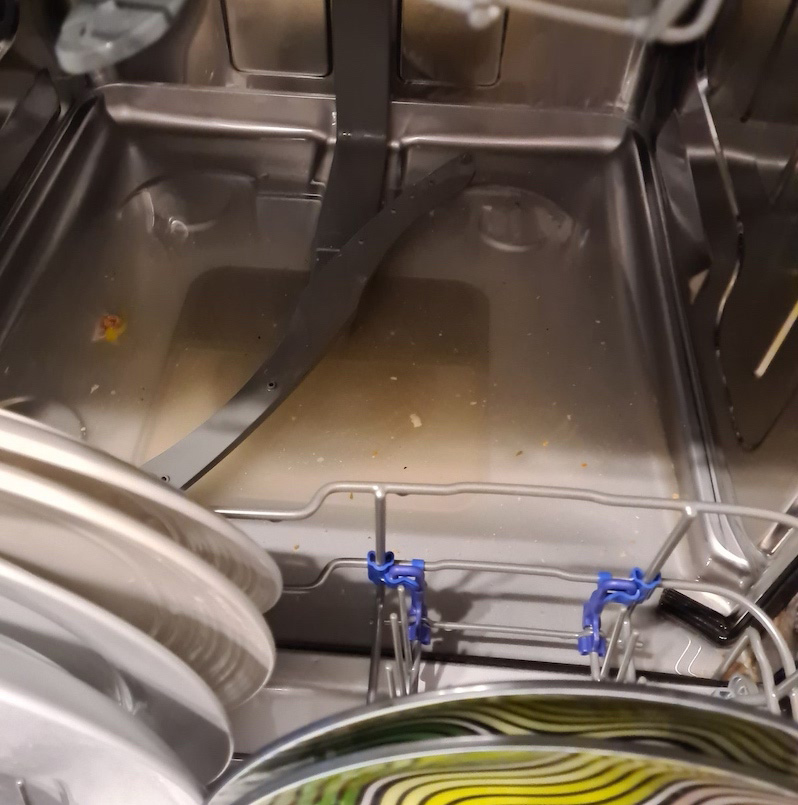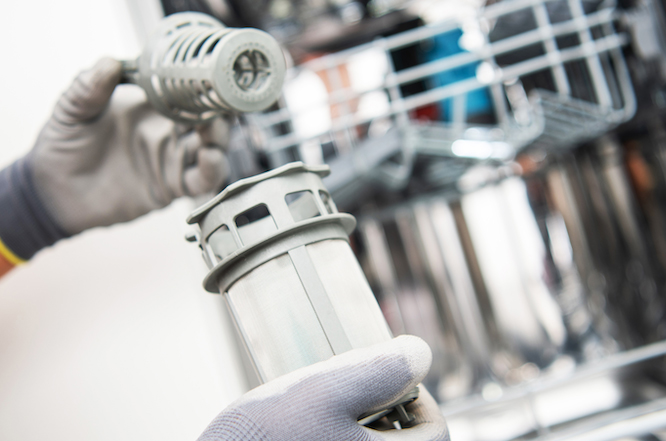Why is My Dishwasher Not Draining?

Your dishwasher is an appliance that you probably can’t live without. Unfortunately, on occasion, it might stop functioning and you’ll need to figure out why. There are several reasons why your dishwasher is not draining properly. We have prepared a few insights to help you troubleshoot before you call in a service technician.
Three Things You Need to Check
-
Clogged filter
-
Blocked hose
-
Damaged pump
Troubleshoot
Step 1: Remove the water
Make sure you turn off the power or unplug your dishwasher. Place a towel at the bottom of the dishwasher door and remove the water from the bottom of the dishwasher. Unfortunately, there is no quick way to do this, although the easiest way to scoop the water out is with a large cup or container. When you’ve got most of it out you can mop up the rest with a towel.
Step 2: Check to see if your dishwasher filter is clogged

Next, check your dishwasher’s filter. The purpose of the filter is to catch excess food and to stop grease and grime from being redeposited throughout your dishwasher. If you don’t already clean your filter regularly, we recommend doing so at least once a fortnight.
The filter is located beneath the swing arm at the bottom of your dishwasher. You can remove it by turning it (most likely anti-clockwise but there might be an arrow indicator) and it will come out. Remove any food from the filter and give the mesh a good scrub. While the filter is out, have a look in the housing to see if there are any large pieces of food to remove. If cleaning your filter hasn’t resolved the problem, move on to step three.
Step 3: Check to see if the drain hose is blocked
A blocked drain hose could be the culprit. The drain hose is an important component of your dishwasher. You’ll find the drain hose clamped or clipped underneath your sink. Have a bucket handy, and once you have unclipped the hose, allow any water to drain out. While your hose is unclipped have a good look inside and dislodge any large particles with a coat hanger. When you put the hose back in place, ensure there are no kinks. If you need to replace the hose, see our article ‘How to replace your dishwasher drain hose’.
Step 4: Check to see if a damaged drain pump is causing the problem
Food debris circulating through your dishwasher may damage your drain pump and be the cause of your dishwasher not draining. A drain pump clogged with large particles of food and built-up grease may prevent the water from draining, resulting in standing water at the bottom of your dishwasher.
On most models, you will need to access the bottom of the dishwasher, remove the base plate and disconnect the inlet hose, before you can inspect the drain pump. You should be able to check if attempting this won't void your warranty and feel confident you can complete this safely.
Prevent Your Dishwasher from Having Draining Issues in the Future
There are a few things that you can do to keep your dishwasher working in optimum condition and reduce the instances of surprise repairs.
- Scrape plates, pots and pans of large food debris before putting them in the dishwasher
- Regularly clean out the filter as mentioned in step 2
- Give the inside of your dishwasher a good clean, including the walls, top, bottom and swing arm, to reduce the build-up of grease and grime
- Check if your dishwasher has a 'cleaning' cycle function and use it regularly
What Spare Parts to Buy
If you have read this far and still haven't come to a solution or are unsure if you need to purchase a dishwasher spare part, then it might be time to contact a professional.
At Wayne’s Wholesale Spares, our experienced team will provide technical advice to help you understand the issue and recommend the right spare parts. We can also connect you with a service technician in your area, should you need one. So, get in contact now and let us help you troubleshoot the issue, find the right part, or find a local technician to help you.

